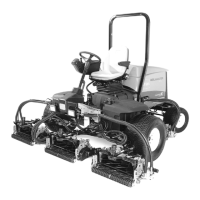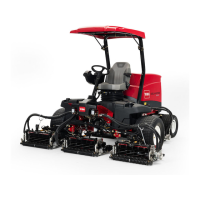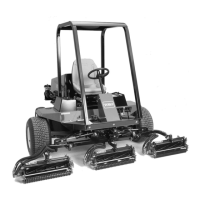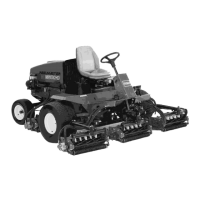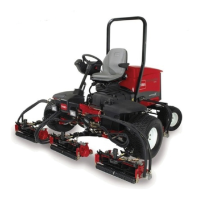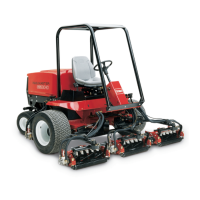Nozzle Tests
There are several tests to examine the condition of the
injection nozzles. These tests require the use of a
nozzle tester and nozzle tester adapter. (See the Spe-
cial Tools section of this chapter.)
The nozzle tester forces fuel from the nozzle
under extremely high pressure. Always point
the nozzle tip away from yourself and any
other personnel. Contact with the fuel stream,
even though it appears to be a mist can cause
fuel to penetrate clothing and skin. If fuel is
injected into the skin get proper medical at-
tention from a doctor immediately. A serious
infection or other reaction can develop if the
injury is not properly treated. Tighten all
adapter fittings to prevent leaks. If a leak is
suspected, use a piece of cardboard, not your
hands to search for a leak.
To prevent possible injury, wear eye protec-
tion when operating the nozzle tester.
DANGER
CAUTION
IMPORTANT: Always use fresh filtered fuel in the
nozzle tester. Use of dirty fuel can damage the
precision parts of the injector nozzle. It is a good
practice to:
1. Bolt the tester securely to the test
bench.
2. Use a drain
pan to catch fuel.
3. Flush the adapter by pumping the handle of the tester
slowly several times before attaching the nozzle to be
tested.
Injection Pressure Test
The diesel engine requires that fuel be sprayed into the
combustion chamber at a precise point in the compres-
sion stroke. The point at which this fuel injection occurs
is determined by the injection timing. If the nozzle is
defective, damaged or adjusted incorrectly, starting fail-
ures, low power output, or engine knocking can occur.
3. Allow pressure to dissipate before performing the test
.
4. Operate the pump handle slowly and observe the
gauge to determine the pressure at which the nozzle
opens and the fuel is sprayed.
5. Verify that starting pressure is within the following
limits: Minimum starting pressure is 130 kg/cm
2
(1850 psi); Maximum starting pressure is 150 kg/cm
2
(2134 psi).
6. Starting pressure can be adju
sted by adding or re-
moving shims from the nozzle. (See Nozzle Service in
the Fuel System Repairs section of this chapter.) A
0.1 mm shim will cause a 10 kg/cm
2
(140 psi) starting
pressure difference. Shims are available from 1.25 mm
to 1.7 mm thick in 0.5 mm increments.
7. Repeat the test after install
ing shim to veri
correct starting pressure has been obtained.
Chattering Test
fy that a
Proper and free operation
of the nozzle valve can be
determined by the chattering test.
1. Securely fasten the nozzle to be tested to the adapter.
2. Operate the pump handle slowly (ten strokes per
minute). As the pump pressure reaches the starting
pressure the nozzle valve will chatter as it opens and
closes rapidly. A nozzle which does not chatter may be
the result of a binding or bent nozzle valve.
Nozzle Leakage Test
A nozzle that
leaks fuel from the nozzle orifice must be
replaced.
1. Securely fasten the nozzle to the adapter.
2. Wipe all fuel from the nozzle.
3. Operate the pump until the pressure is approximat
ely
108 kg/cm
2
(1500 psi). Maintain this pressure to the
nozzle.
4. Watch for leaks where the threaded nozzle body
threads into the retaining nut. Leaks in this area would
indicate a bad seat between the distance piece and/or
the body or nozzle assembly.
5. If leakage occurs, verify
that the body is tightly fas-
tened in the retaining nut. If the leak continues, replace
the nozzle.
6. While pressure is being applied, watch for an accu-
mulation of fuel at the tip of the nozzle (Fig. 18). A small
Reelmast
er
®
223-D/5100-D
1. Securely fasten the nozzle to the adapter.
2. Pump the handle several times to purge a
n
ozzle mechanism.
Testing
ir from the
Page 3 - 20

